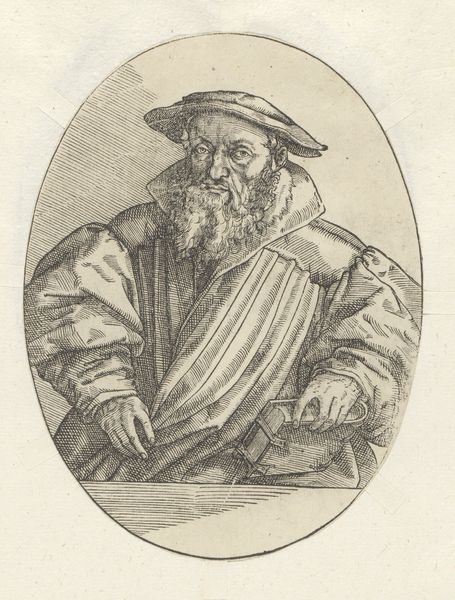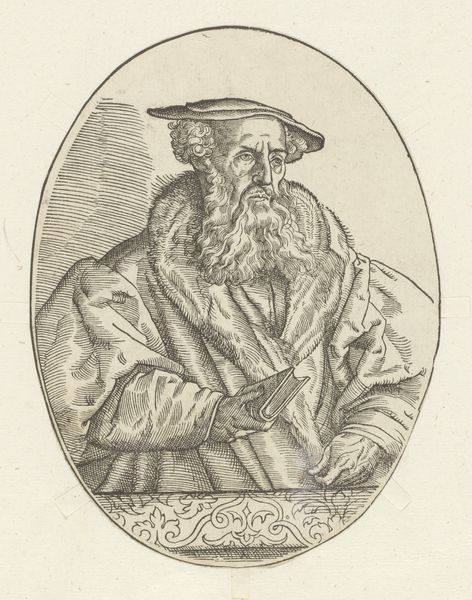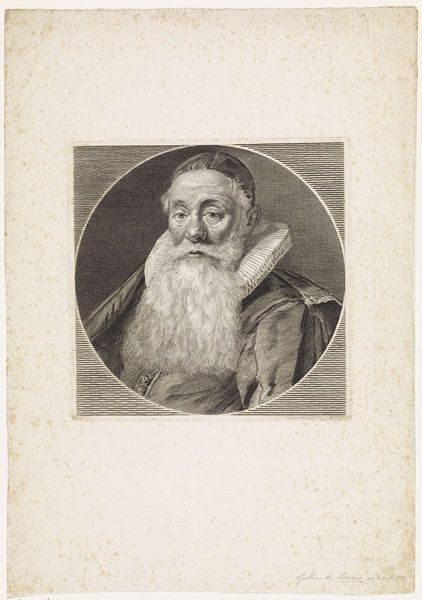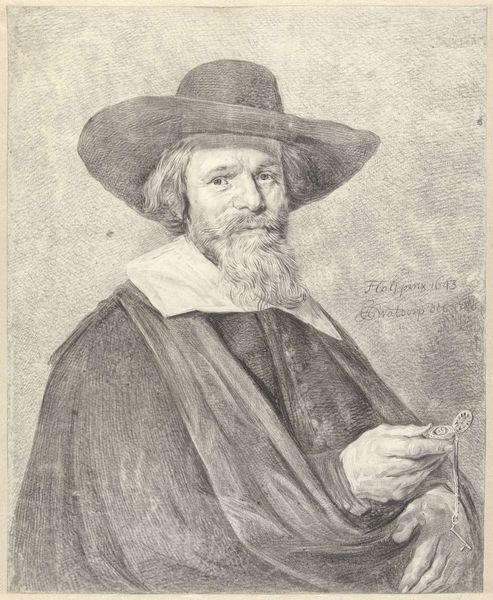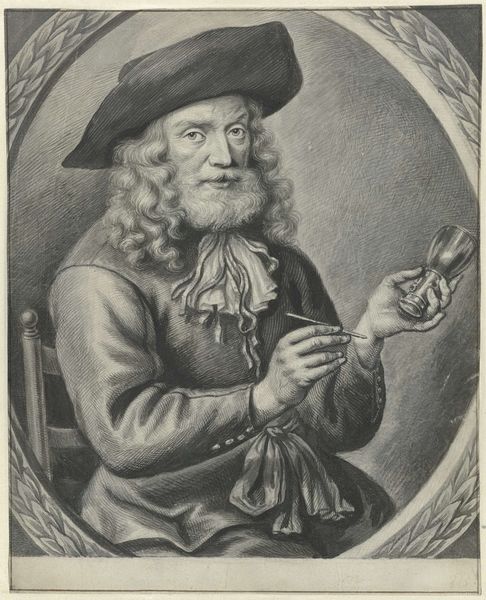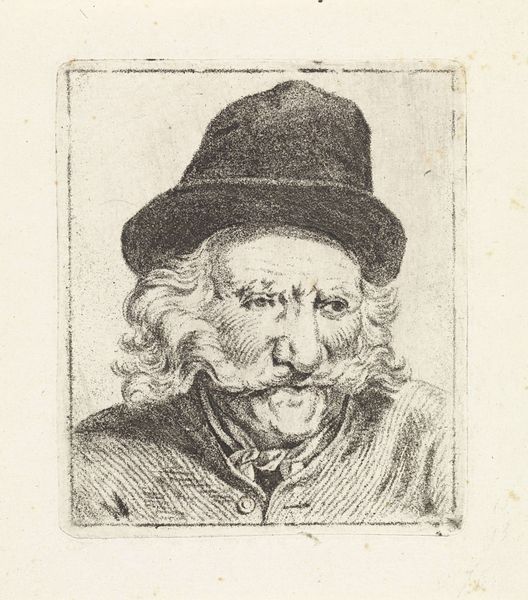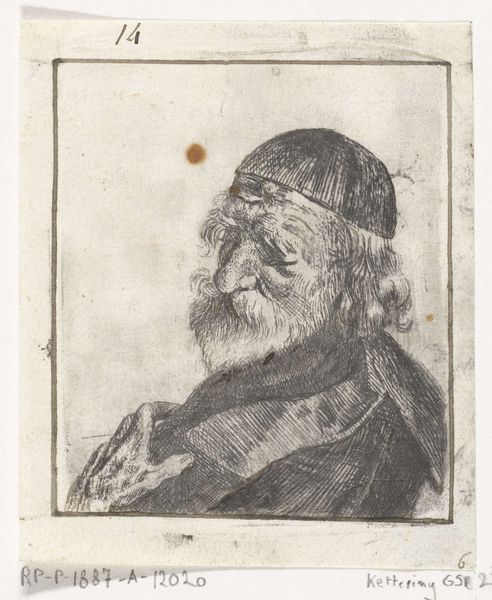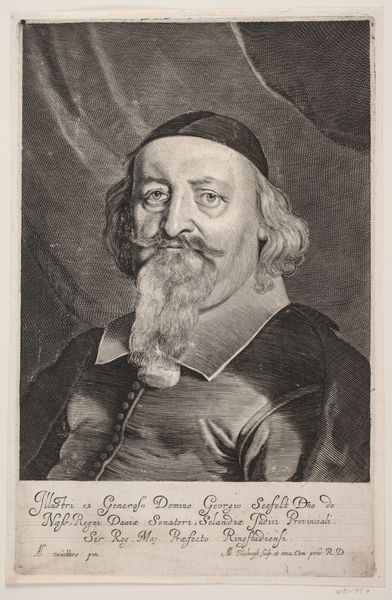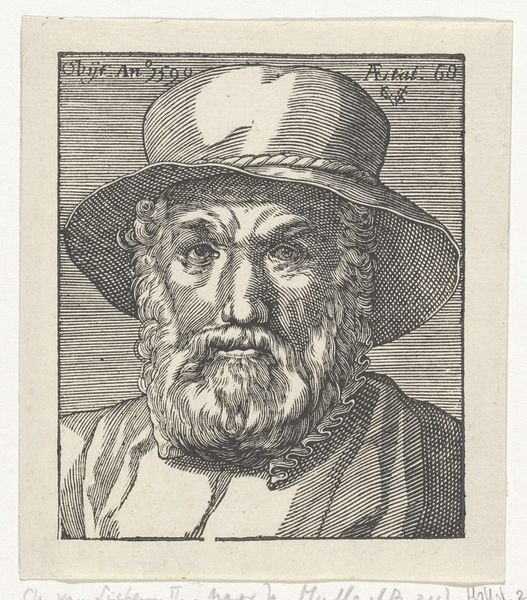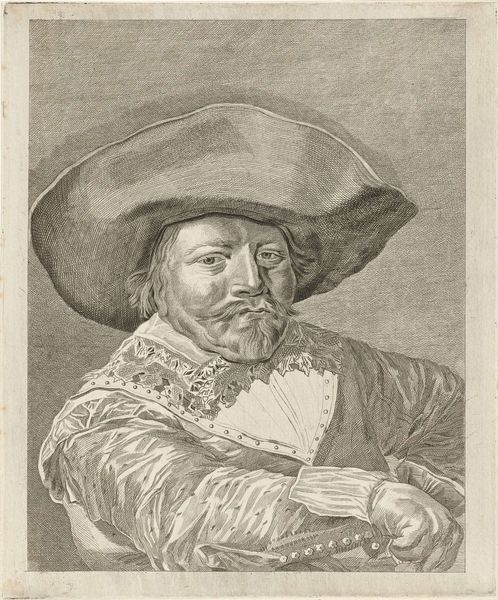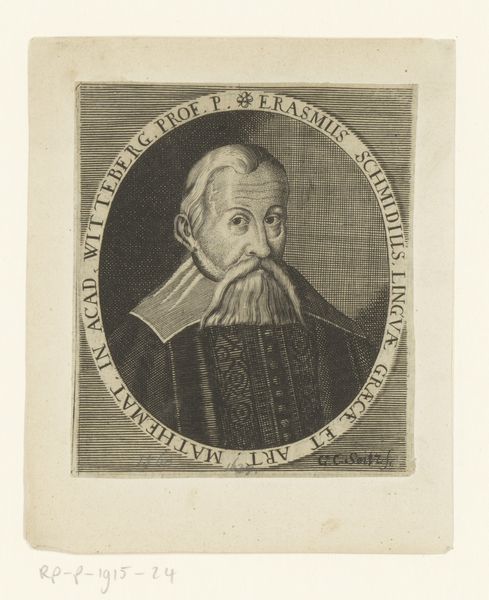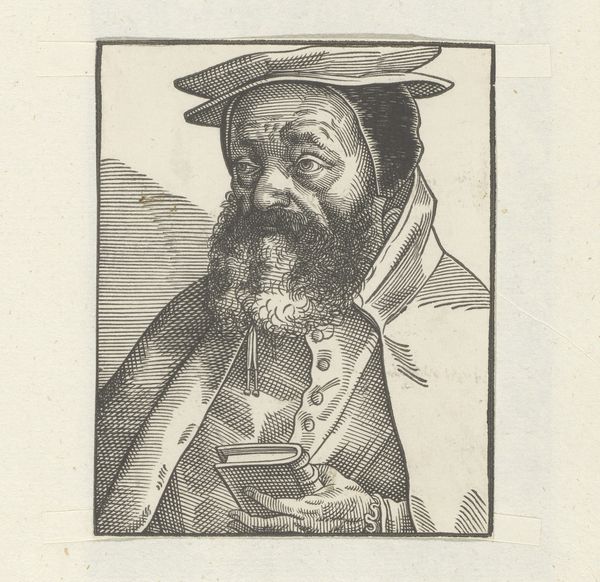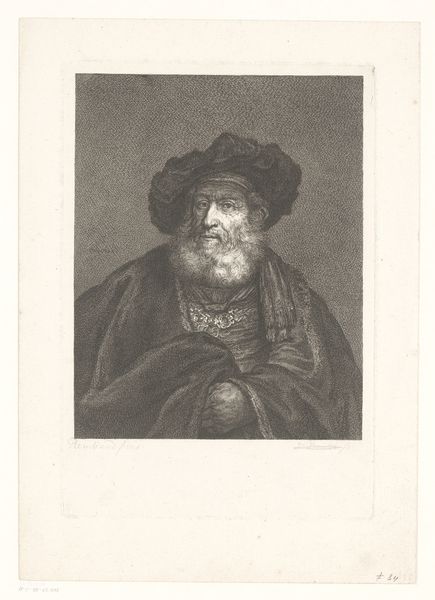
print, engraving
#
portrait
# print
#
figuration
#
line
#
engraving
Dimensions: height 132 mm, width 100 mm
Copyright: Rijks Museum: Open Domain
Curator: This is a portrait of Petrus Scriverius, made before 1816 by Nicolaas van der Worm. It is a print, more precisely, an engraving. Editor: It's strikingly etched, those lines creating such depth. There is a softness to the face that defies the medium. Curator: The choice of engraving, specifically, I think speaks volumes about how society viewed knowledge production. Here’s this technique reliant on meticulous, almost industrial precision used to preserve the likeness of an intellectual. We might read it as enshrining not just Scriverius, but also the labor of crafting his image. Editor: Definitely, the labor is palpable; look at the detail in that hat! But let's consider Scriverius himself. What was his role, and how does that affect our viewing experience? Curator: Scriverius was a noted scholar. His life and work existed at the intersection of scholarship and civic engagement. Therefore, depicting him with such intense detail elevates not only the man but also the societal value placed on knowledge and learning. The print medium allows for wider distribution of his image and, therefore, wider dissemination of the values he embodied. Editor: I see your point. It connects to the notion of reproducible media enabling access, aligning with his role. Curator: Indeed, this portrait also reflects certain performative aspects of identity of being a scholar. What can that specific wide-brimmed hat, paired with the dignified pose, say about the image Scriverius intended to project and about the social expectation imposed on intellectual figures? Editor: Considering the engraving technique, its comparative replicability underlines how material processes extend not only to crafting the artwork itself but also constructing reputations and ideals. Curator: It invites us to reflect on art’s role in affirming societal norms, even unintentionally. Editor: Absolutely. Reflecting on this, the lines composing the face become an inventory of the social functions assigned to him, made literal by the engraving. Curator: In closing, reflecting on Scriverius, it becomes evident that his impact stretches far beyond that, offering valuable insights into the intellectual landscape of his time. Editor: Yes, and thanks to the act of creating a replicable object with such meticulousness, our insights today gain extra meaning.
Comments
No comments
Be the first to comment and join the conversation on the ultimate creative platform.
